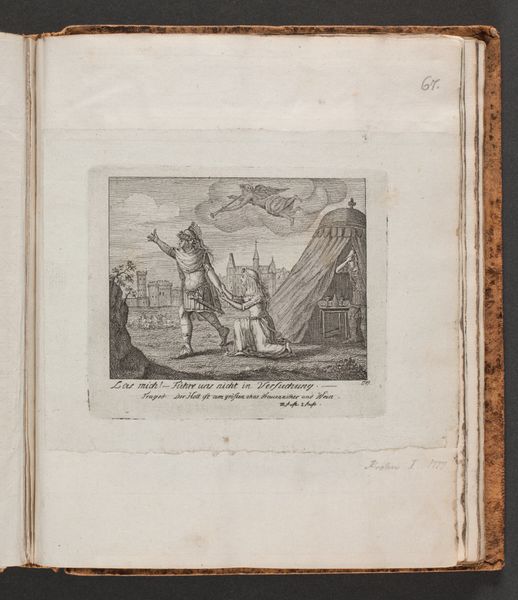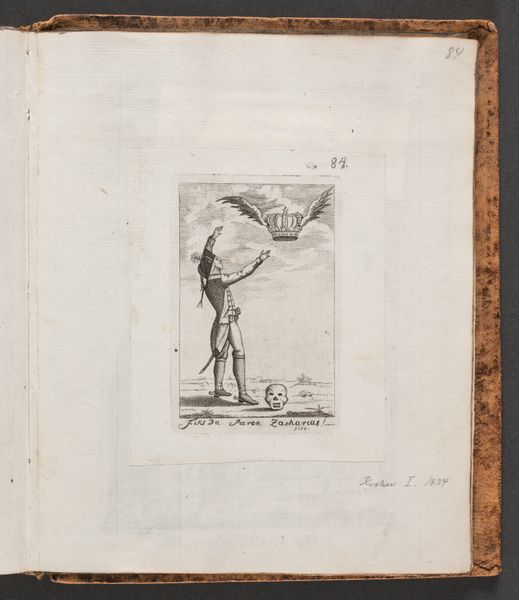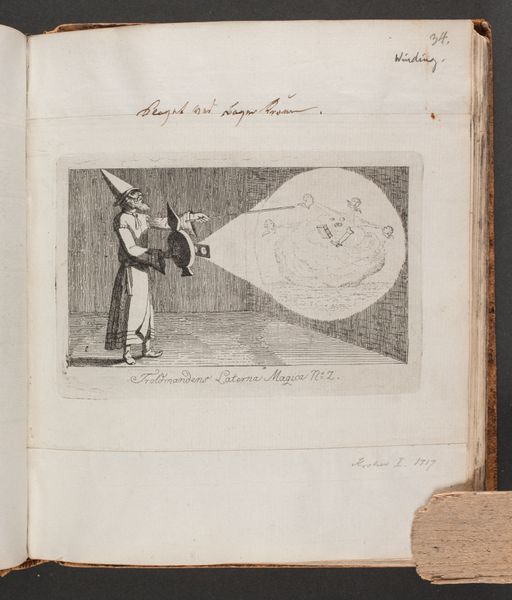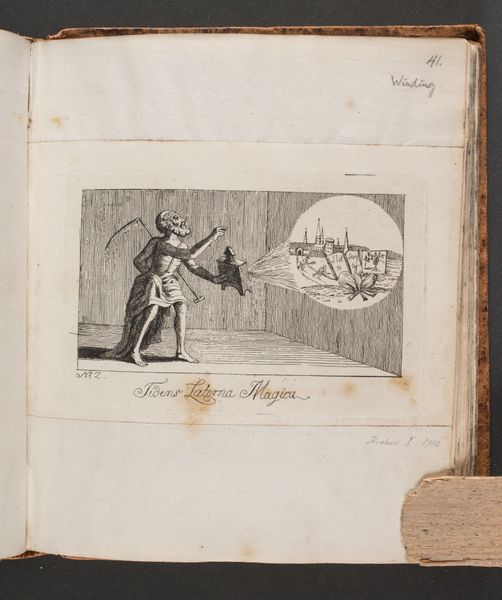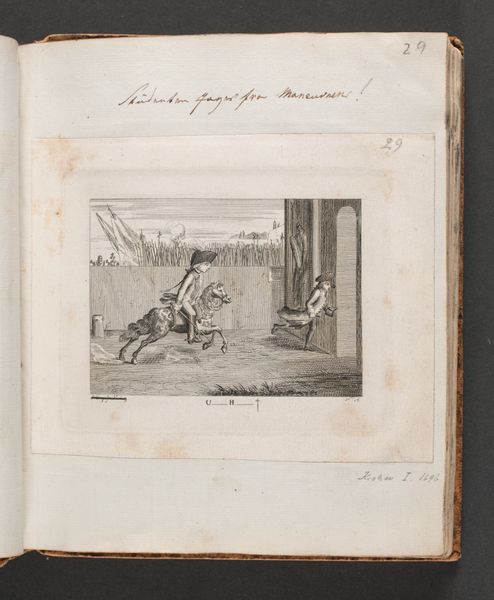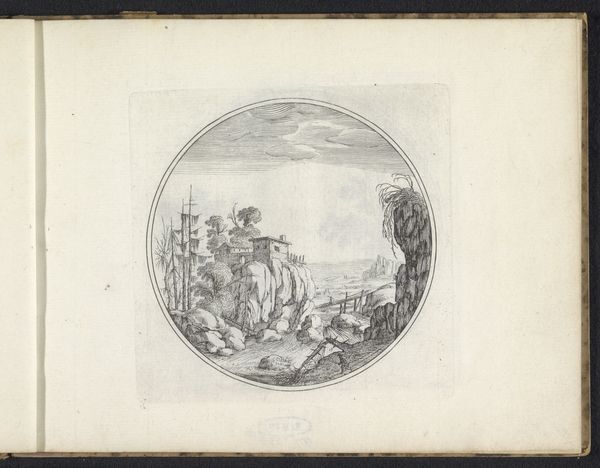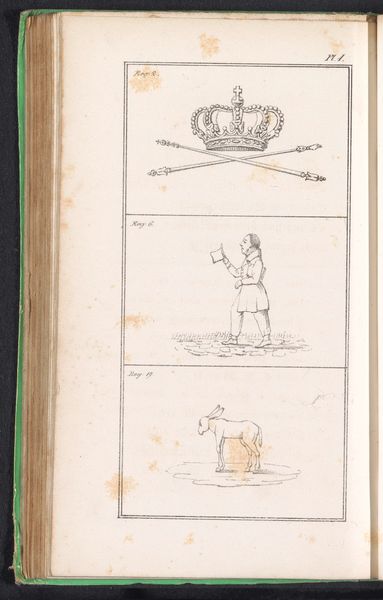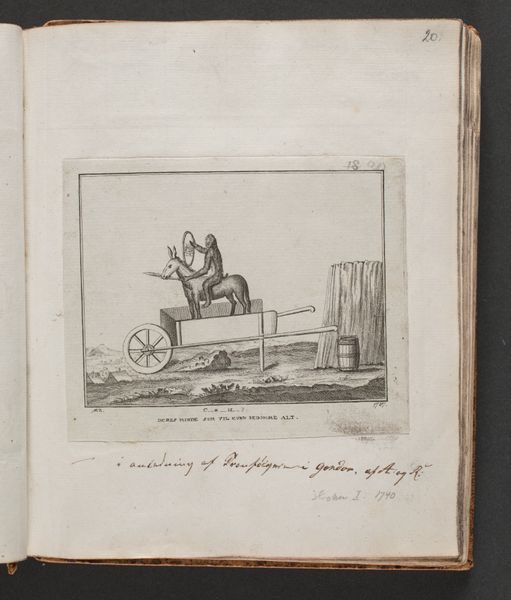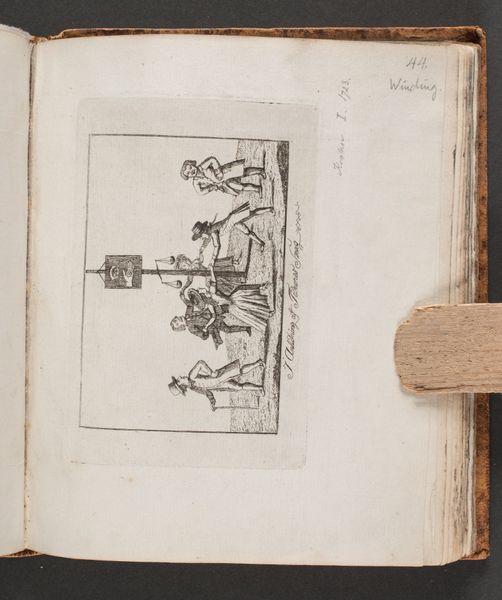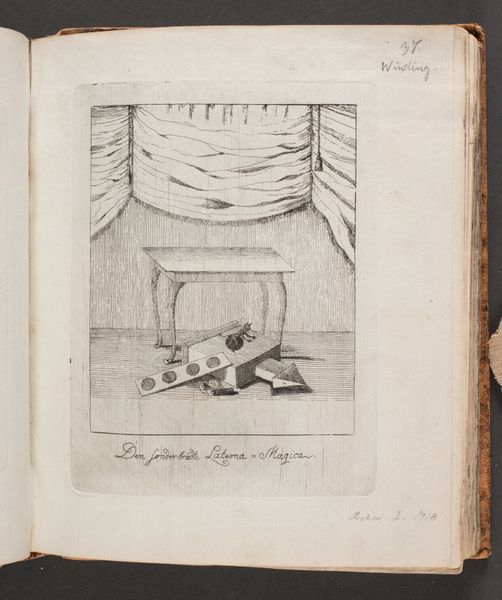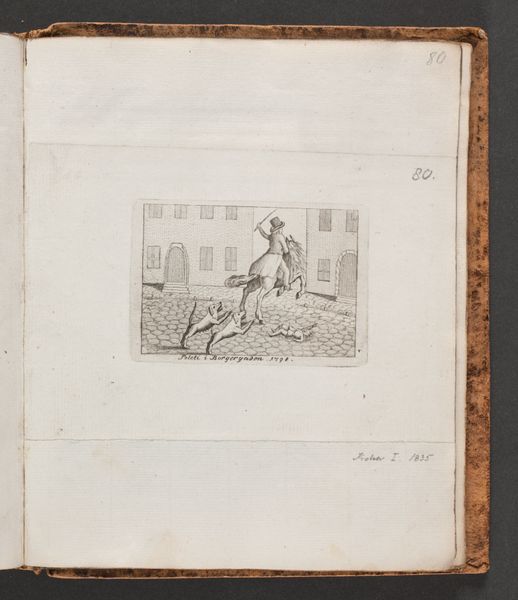
Dimensions: 84 mm (height) x 90 mm (width) (plademaal)
Curator: Welcome. Today, we'll examine an etching from 1772 titled "Tugtelse". Editor: My first thought? How small and mean it is. Is that a man whipping another? The level of violence is unsettling. Curator: This baroque print, part of a larger genre-painting tradition, appears as a bookplate of sorts in an old manuscript. I see the same sort of cruelty often in my work. It’s not all portraits and landscapes. We often see that the personal is political in unexpected ways. Editor: Absolutely. Even a tiny domestic scene reflects a larger system of power, specifically with respect to physical correction, often as social correction, and public spectacle as enforcement. Who do you think had such an image created? The subject's face, his clothing— it implies at least some social standing. Curator: Considering its existence within a book, most likely an individual who desired to underscore certain personal convictions and wanted others to remember their position. We can even imagine such objects acting to confirm existing structures of power. The history of collecting—and, by extension, images such as this—certainly points to it. Editor: It feels performative, definitely. I would like to know more about how gender, race, and class dynamics might intersect here—not only the visual violence that makes my gut clench, but also the historical implications in that relationship between supposed social superior and... who exactly are they oppressing? I see that circle as a visual language indicating restriction and control. Curator: These were violent times. These etchings acted as reminders, functioning within a social environment with its own particular dynamics and functions, perhaps a call to the "good old ways," as so often has been the case across human history. It would also speak to the personal library as a political site. Editor: Exactly, or, if nothing else, perhaps a warning from the oppressor class. Thank you, that adds valuable social context that pushes past an initial sense of revulsion. The book context is especially telling, with a visual grammar that echoes those in conduct and emblem books meant to shape early modern values and ideals. Curator: Indeed. Every object holds value and reflects meaning from those long dead and lost to time. These details enable the museum space to make a more direct connection between our guests and the wider, more varied experiences of a prior generation. Editor: Well said. That added layer, contextualizing the history and violence present, shifts everything and forces you to recognize not only art but social responsibility itself.
Comments
No comments
Be the first to comment and join the conversation on the ultimate creative platform.
